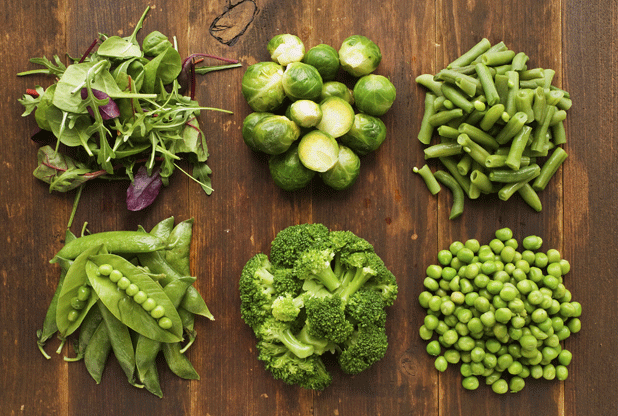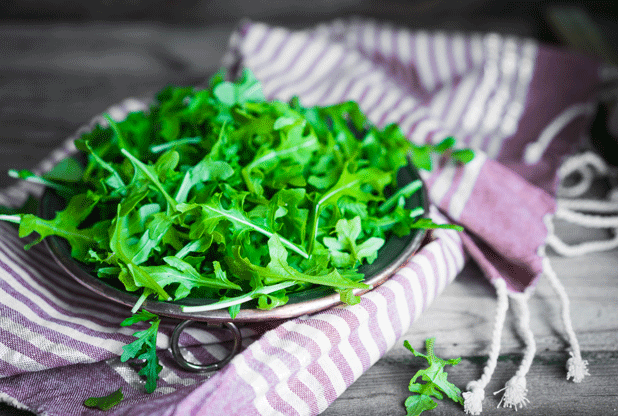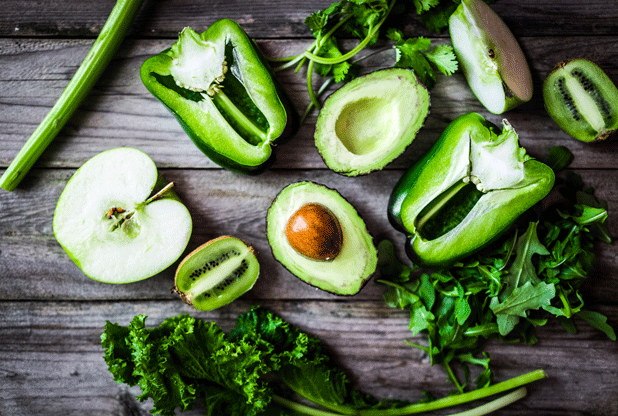
Factory farming conditions and antibiotic-resistant pathogens emerging as a result of them pose an existential threat to humans in the form of zoonotic diseases. Why it’s time to produce and consume food more thoughtfully.
By eating spinach and cabbage you are going to have elastic and hydrated skin because of lutein, which protects you from the oxidant action of time and the sun. But only if you don’t smoke and drink alcohol.
Green cabbage, turnip, Savoy cabbage, spinach, broccoli, wheat, peas, lettuce, chicory, turnip tops, watercress, radicchio, basil, parsley, arugula, Brussel sprouts, leeks, pumpkin, paprika and papaya. All these food products are sources of lutein, an antioxidant carotenoid that should be taken in through food, since our body doesn’t produce it by itself.
Lutein, according to a study conducted by the division of Dermatology of Naples University, protects the eyes and, by depositing on the skin, it increases skin hydration and improves skin elasticity. Research shows that women who participated in the study had a reduced lipid peroxidation, a marker of damaged free radicals.

“Lutein – explains professor Morganti, lead researcher – is an oxi-carotenoid whose molecule, similar to beta-carotene, has two -OH groups at the outer surface. Thanks to this, while from beta-carotene two molecules of vitamin A can form, lutein has photoprotective and hydrating properties that can neutralise all types of free radicals inside and outside the cell in the macula lutea of the eyes as well as in the epidermis”.

Lutein is found in all green leaf vegetables but even in carrots and yellow-orange fruits. These foods should be consumed four or five times a day, keeping in mind that the ideal daily intake of lutein should be 10 mg in a varied and balanced meal.

The factors that can tackle the anti-ageing action of lutein are smoke, alcohol consumption and gastroenteric, liver and kidney pathologies.
Siamo anche su WhatsApp. Segui il canale ufficiale LifeGate per restare aggiornata, aggiornato sulle ultime notizie e sulle nostre attività.
![]()
Quest'opera è distribuita con Licenza Creative Commons Attribuzione - Non commerciale - Non opere derivate 4.0 Internazionale.
Factory farming conditions and antibiotic-resistant pathogens emerging as a result of them pose an existential threat to humans in the form of zoonotic diseases. Why it’s time to produce and consume food more thoughtfully.
The world of cinema recognises the link between food choices and the climate crisis by offering vegan menus for awards season events, including at the most important of them all: the Oscars.
Let’s look at the reasons behind the growth of veganism in India, as a small yet vocal section of the population turns towards this diet and lifestyle in the largest milk producing country in the world.
by Jeffrey Y. Campbell, Manager of the Forest and Farm Facility at FAO In the Ecuadorian Amazon, Kichwa farmers grow dozens of products on tiny parcels of land. Their lands hum with biodiversity, yielding nutritious foods that have sustained families for generations. Wandering among fruit and nut trees and crops, these indigenous agroforesters fill their baskets
Mint has many health benefits, but in food it’s often accompanied by artificial green colourings. Instead, Galatea has created a green mint ice cream in a completely natural way.
We’re talking about Galatea, a company that produces semi-finished products for artisanal ice creams using high quality ingredients, natural colouring, excluding thickeners and hydrogenated fats, respecting the environment and supporting the less fortunate.
The mad rush to fake food, like fake meat made with genetically-modified soy, ignores the importance of the diversity of our foods and culinary cultures. It’s a recipe to accelerate the destruction of the Planet and our health.
Like with all foods, the quality of an ice cream can be discerned by reading its label. An expert explains how to do this, and tells us how their company steers clear of chemicals, using only natural ingredients to produce an excellent and “free” ice cream.
Quality ingredients, no artificial colouring and hydrogenated fats. These are the main features of a great ice cream. But what makes an ice cream parlour “good”, i.e. sustainable?







